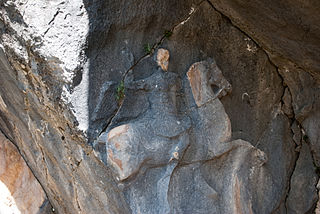 W
WAlcetas, was the brother of Perdiccas and the son of Orontes from Orestis. He is first mentioned as one of Alexander the Great's generals in his Indian expedition.
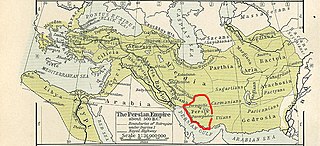 W
WAlexander was brother of Molon. On the accession of the Seleucid king Antiochus III, afterwards called the Great, in 223 BC, he entrusted Alexander with the government of the satrapy of Persis and Molon received Media. Up to that time, local rulers of Persis, the Fratarakas seem to have been in charge of the region, between circa 295 and 220 BC.
 W
WMarian Bernaciak was a lieutenant in the Polish Army, a member of ZWZ and the Home Army, a major and a legendary leader of an underground partisan unit of WiN in the Lublin region.
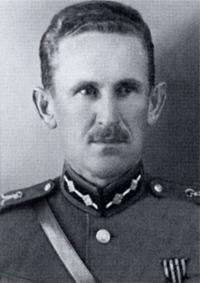 W
WLudvigs Bolšteins was a Latvian general. From 1925 to 1928 Bolšteins was commander of the Aizsargi home guard, from 1928 to 1940 commander of the Latvian border guard. He committed suicide following the Soviet occupation of Latvia.
 W
WKarl Robert Max Bülowius was a German Army officer who served during the First World War and the Second World War. He also served eleven non-consecutive years for the Weimar Republic during the interwar period which began in 1919 and ended on September 1939.
 W
WDr. Julian Chorążycki served as doctor-in-chief of the infantry regiment in the Polish Army during the reconstitution of sovereign Poland. In the interwar period, he was a throat surgeon practising in Warsaw. Born Jewish, Chorążycki spent two years in the Warsaw Ghetto. During the Holocaust in Poland he became the first leader of the perilous prisoner uprising at the Treblinka extermination camp. On August 2, 1943 – after the long period of preparation posing an immediate threat to life – an armed revolt in Treblinka erupted, however, Chorążycki committed suicide on April 19, 1943 when faced with imminent capture, to avoid revealing details of the uprising and its participants under torture.
 W
WPaul-Marie-Adolphe Costermans was a Belgian soldier and colonial civil servant. After a brief career in the Belgian Army, Costermans enlisted for service in the military of the Congo Free State, the Force Publique, in 1890 and later served in the colony's administration. During several periods of service in the colony, Costermans rose through the ranks. Between 1904 and his death in 1905, he held the position of Vice Governor-General of the Congo.
 W
WBrigadier Hector Cyril Daniel was a South African military commander. He served in the Royal Air Force in World War I, becoming an ace with nine aerial victories, and joined the South African Air Force in 1923.
 W
WHampsicora was a Sardo-Punic political leader and landowner of Sardinia, and the leader of the major anti-Roman revolt in the province of 215 BC.
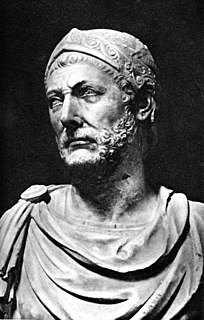 W
WHannibal Barca was a Carthaginian general and statesman who commanded Carthage's main forces against the Roman Republic during the Second Punic War. He is widely considered one of the greatest military commanders in world history. His father, Hamilcar Barca, was a leading Carthaginian commander during the First Punic War. His younger brothers were Mago and Hasdrubal, and he was brother-in-law to Hasdrubal the Fair; who also commanded Carthaginian armies.
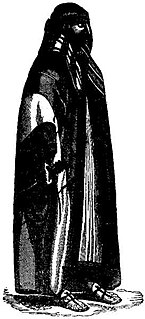 W
WRahmah ibn Jabir ibn Adhbi Al Jalhami was an Arab ruler in the Persian Gulf region and was described by his contemporary, the English traveler and author, James Silk Buckingham, as ‘the most successful and the most generally tolerated pirate, perhaps, that ever infested any sea.’
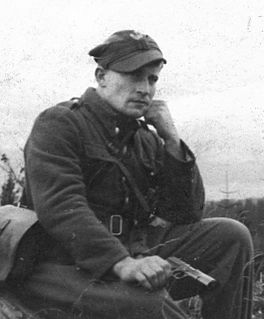 W
WJózef Kuraś,, noms-de-guerre "Orzeł" (Eagle) and from June 1943 "Ogień" (Fire); was born in Waksmund near Nowy Targ. He served as lieutenant in the Polish Army during the invasion of Poland, and became the underground member of Armia Krajowa and Bataliony Chłopskie in the Podhale region. Soon after the end of World War II, he was one of the leaders of the so called "cursed soldiers".
 W
WMolon or Molo was a general and satrap of the Seleucid king Antiochus the Great. He held the satrapy of Media at the accession of that monarch ; in addition to which, Antiochus conferred upon him and his brother Alexander the government of all the upper provinces of his empire. But their hatred of Hermeias, the chief minister of Antiochus, soon led them both to revolt in 222 BC. The two generals at first sent against them by the king were unable to oppose their progress, and Molon found himself at the head of a large army, and master of the whole country to the east of the Tigris.
 W
WWładysław Raginis was a Polish military commander during the Polish Defensive War of 1939 of a small force holding the Polish fortified defense positions against a vastly larger invasion during the Battle of Wizna. Because the positions were held at great cost for three days before being annihilated with few survivors, Wizna is referred to as the Polish Thermopylae and Captain Raginis as a modern Leonidas.
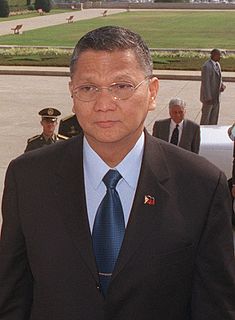 W
WÁngelo Tomás Reyes was a Filipino soldier and politician who served as the Armed Forces of the Philippines (AFP) Chief of Staff from 2000 to 2001 under President Joseph Estrada. At the height of the 2001 EDSA Revolution, Reyes withdrew his support for Estrada, which led to the installation of Vice President Gloria Macapagal-Arroyo as president, under whom he then served as Cabinet Secretary until 2010. He also served under Arroyo as Secretary of the Departments of the Interior and Local Government, Environment and Natural Resources, Energy, and National Defense.
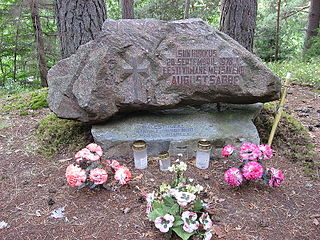 W
WAugust Sabbe was one of the last surviving Estonian members of the Forest Brothers, a group of citizens of Estonia, Latvia and Lithuania who resisted and fought against the Soviet occupation of their three nations. Sabbe hid in the forests of Estonia, living off of the land like other Forest Brethren.
 W
WHaydée Santamaría Cuadrado was a Cuban revolutionary and politician, regarded as a heroine in post-revolutionary Cuba. She participated in the assault on Moncada Barracks in Santiago de Cuba on July 26, 1953, an action for which she was imprisoned along with Melba Hernández. She was a founding member of the Central Committee of the Communist Party of Cuba. and one of the first women to join the PCC. She maintained a high position in its leadership throughout her life. Having participated in the attack on the Moncada Barracks, Haydée Santamaría is among a relatively small group of people who were involved in every phase of the Cuban Revolution, from its inception to its fruition.
 W
WSatanta was a Kiowa war chief. He was a member of the Kiowa tribe, born around 1820, during the height of the power of the Plains Tribes, probably along the Canadian River in the traditional winter camp grounds of his people.
 W
WThlocklo Tustenuggee was one of the most prominent Seminole leaders in the Second Seminole War. He spoke English fluently, and also spoke Muscogee. Tustenuggee was one of the three leaders of the 300 Seminoles who fought in the battle that became known as the Dade Massacre. During the war, he and Halleck Tustenuggee, another prominent Seminole leader in the war, met with General Walker Keith Armistead to negotiate, but negotiations broke down and the war resumed. As the war waned, Armistead used money to bribe several Seminole leaders to surrender, but Tustenuggee refused to be bribed and he continued to lead his band in fighting. When the war ended, his Seminole band was one of the few that remained in Florida. In 1843, Tustenuggee and 26 of his followers were forcibly migrated from Florida to New Orleans, Louisiana. They were transported by the USS Lawrence along with 65 other Native Americans and three black slaves. Tustenuggee then committed suicide by swallowing powdered glass. His death was reported in newspapers, as were the deaths of other prominent Native American leaders who died in connection with the Trail of Tears.
 W
WAlice Bradley Sheldon was an American science fiction author better known as James Tiptree Jr., a pen name she used from 1967 to her death. It was not publicly known until 1977 that James Tiptree Jr. was a woman. From 1974 to 1977 she also used the pen name Raccoona Sheldon. Sheldon was inducted by the Science Fiction Hall of Fame in 2012.
 W
WEmory Upton was a United States Army General and military strategist, prominent for his role in leading infantry to attack entrenched positions successfully at the Battle of Spotsylvania Court House during the American Civil War, but he also excelled at artillery and cavalry assignments. His work, The Military Policy of the United States, which analyzed American military policies and practices and presented the first systematic examination of the nation's military history, had a tremendous effect on the U.S. Army when it was published posthumously in 1904.
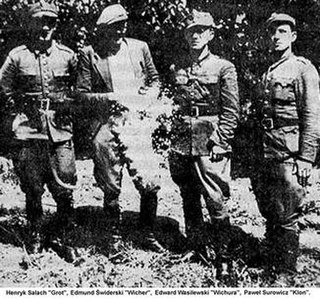 W
WEdward Wasilewski, pseudonym Wichura, was one of the best known anti-communist fighters in the Polish resistance during the Soviet takeover of Poland. Under his command, 44 underground soldiers successfully attacked the NKVD camp in Rembertów on the night of 20–21 May 1945, and liberated 700–1000 NKWD prisoners. Wasilewski was arrested on 26 March 1946 and, after a year spent in prison, was broken by agents of the Ministry of Public Security. He worked as an informant until 1960, denouncing many of his former colleagues. He committed suicide by jumping out of a window in 1968, on the day of the Warsaw Pact invasion of Czechoslovakia.